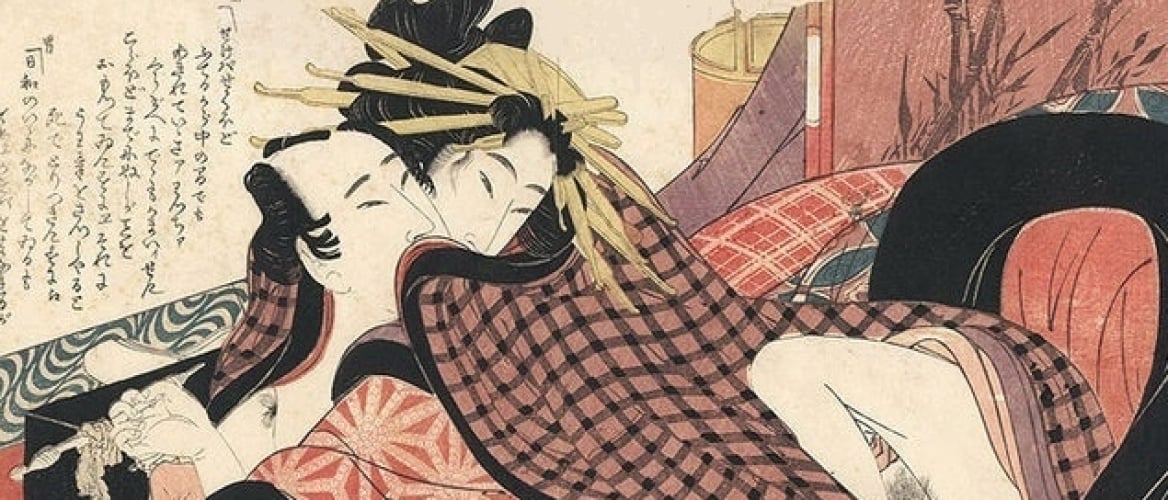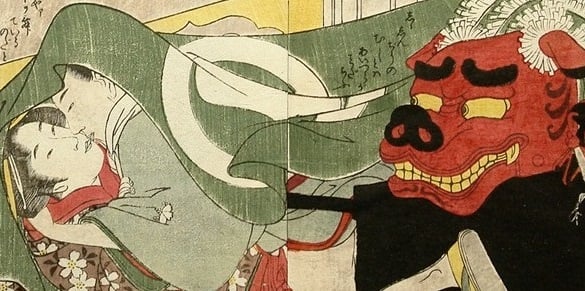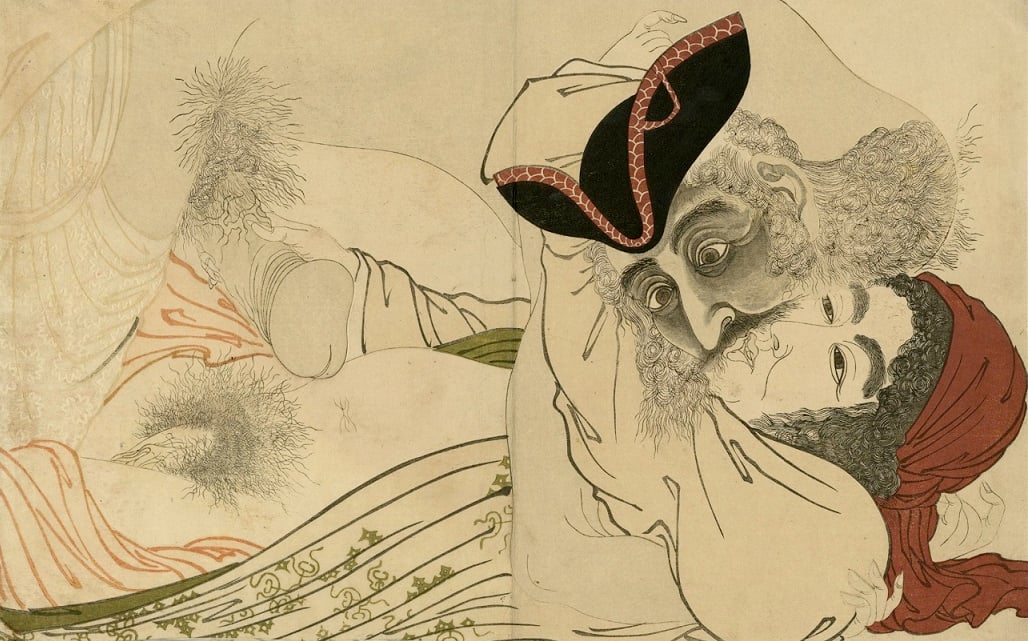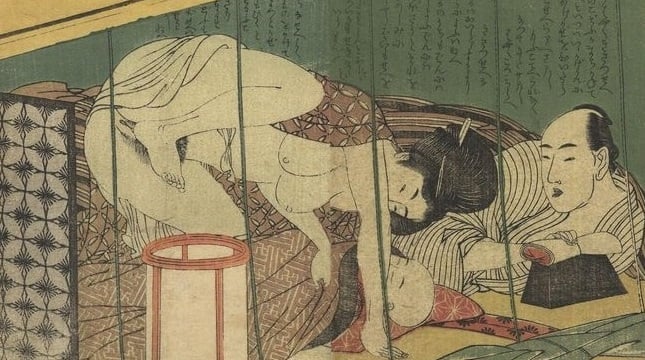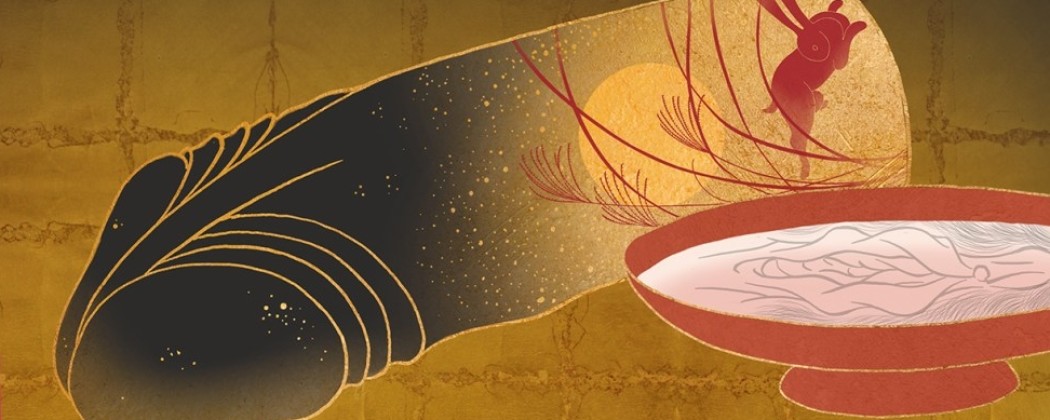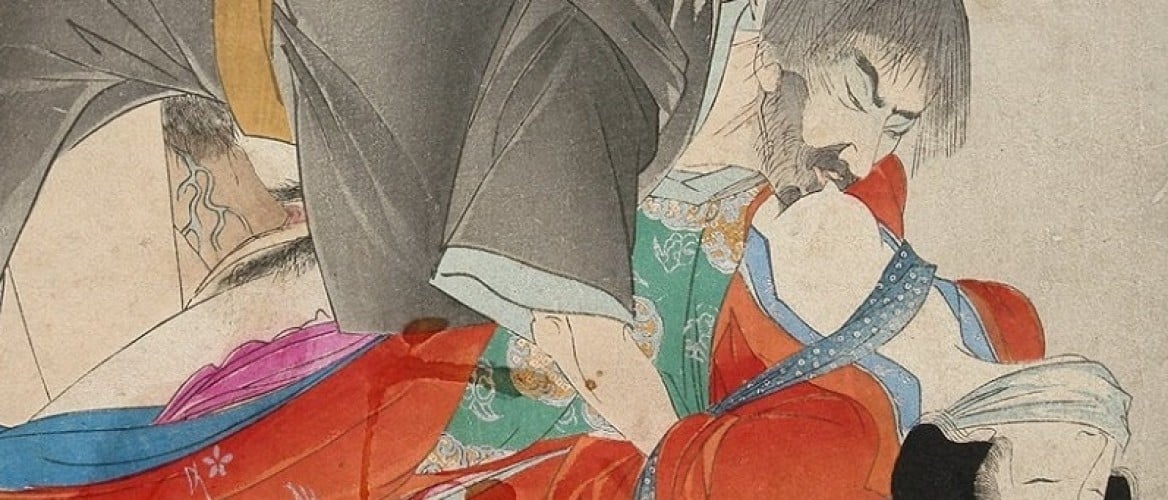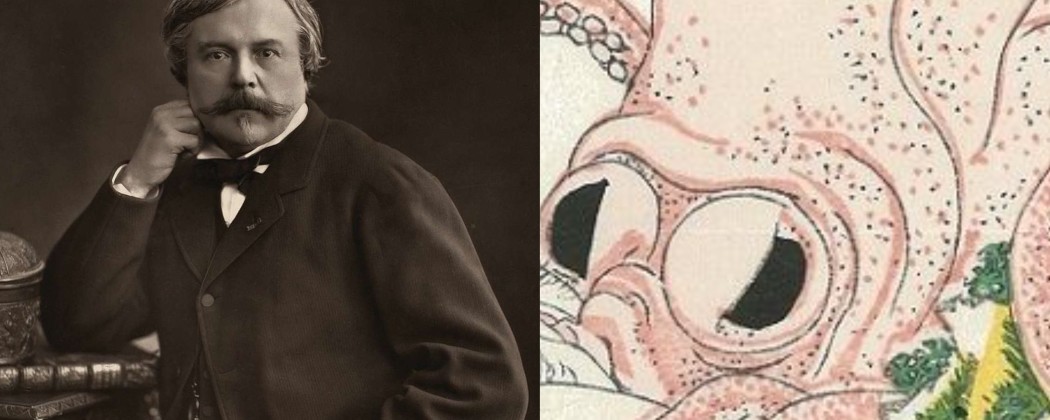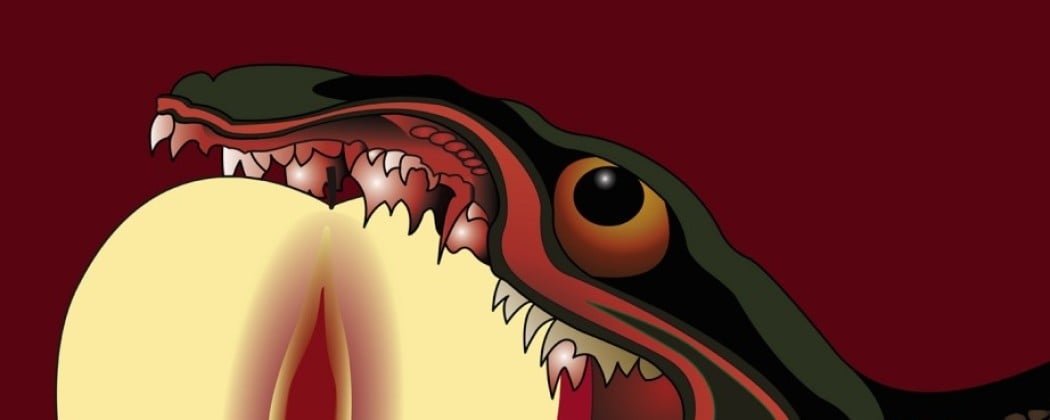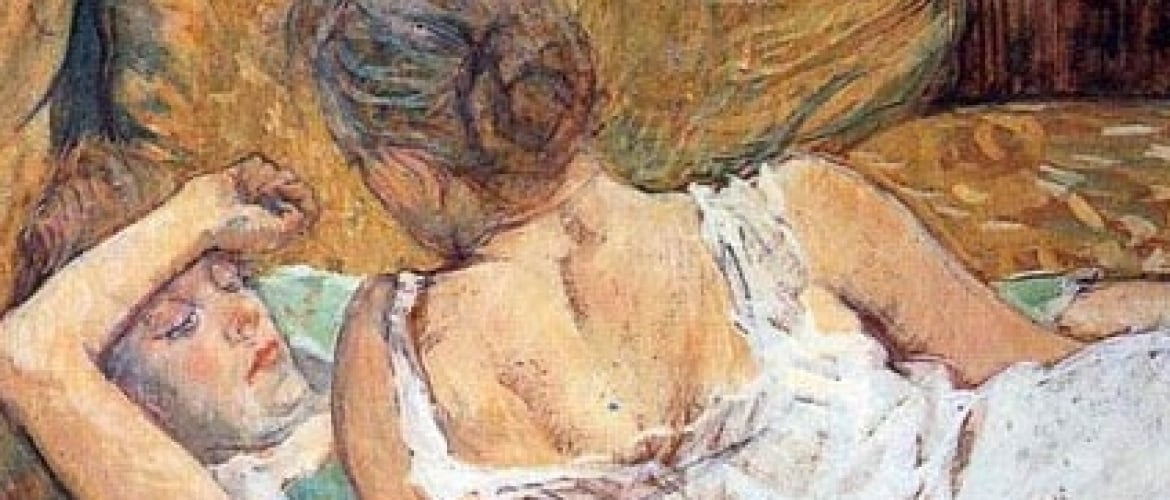
The Post-Impressionist artist Henri de Toulouse-Lautrec (1864-1901) and his interest in Japanese art is closely linked to the writer and art dealer Maurice Joyant (1864-1930). The collection of the latter was one of the most visited by Impressionist and Post-Impressionist painters and are a further indication of the co-dependent, comprehensive network of artists, authors and other devotees of Japanese art.

Fig.1. Famous portrait of Henri de Toulouse-Lautrec in Japanese kimono holding a doll and a fan. Photographed by his friend Maurice Guibert (1876-1938)
Maurice Joyant
Toulouse-Lautrec and Joyant were very close friends their whole lifes. Joyant was responsible for the artist’s breakthrough, wrote his first biography, and became the founder of the Toulouse-Lautrec Museum (in Albi) in 1922. Joyant was an exuberant lover of Japanese art, which he had in common with Toulouse-Lautrec.
Erotica
Lautrec accumulated his collection of Japanese erotica, when he was introduced to this art in the beginning of the 1880s. At that time Japonisme was flourishing in Europe, and he began to purchase and exchange ukiyo-e prints including the works of Kiyonaga, Hokusai, Toyokuni, Hiroshige, and, in particular, Harunobu and Utamaro.

Fig.2. ‘Lesbian couple‘ from the series ‘Models of Callgraphy (Fumi no kiyogaki)‘, 1801 by Chokyosai Eiri
Buddhist Sculptures
His collection focused for the most part on woodblock prints from the eighteenth and nineteenth centuries, even though there were some incidental side steps such as Buddhist sculptures, military arms, netsuke, kimono’s and scroll paintings. In addition Lautrec studied and examined Japanese prints and books from other collections that included erotic works.
Vincent van Gogh
Ukiyo-e remained an influential source of stimulus during the the last part of the nineteenth century, particularly for the Impressionists and the Post-Impressionists: Claude Monet (1840-1926), Paul Cézanne (1839-1906), Émile Bernard (1868-1941) and Vincent van Gogh (1853-1890) to name just four examples. Van Gogh, who befriended Lautrec after a short meeting in the atelier of Fernand Cormon (1845-1924), accumulated hundreds of woodblock prints (and a couple of books). He obtained a lot of aesthetic insights concerning the expressive potential of color by studying the work of Keisai Eisen, Hiroshige and Hokusai, and a lot of the members of the Utagawa school.
Dominant Source
Just as Vincent van Gogh, Toulouse-Lautrec adopted ukiyo-e as the dominant source in the revival of his style in paintings, pastels, prints, and posters. He paid much attention to the portrayal of erotic scenes packed with erotic tension. For that reason it is no surprise that Lautrec felt particularly drawn to Utamaro’s prints that depicted acclaimed, delicate courtesans from Edo (former Tokyo) and the licensed pleasure quarters of the Yoshiwara.
Video featuring a comprehensive overview of Toulouse-Lautrec’s works:
Next time, in part 2 we’ll examine the influence of shunga (in particular Utamaro‘s) on Toulouse-Lautrec’s own erotic works !
Learn more on Eiri’s ‘Lesbian couple’ design!
* Tom Evans in ‘Shunga, the Art of Love in Japan (1975)’ says about this Eiri design (at that time he attributed it to Eisho):
“…The plates showing two lesbians, and a girl masturbating, are both outstanding works. When we remember Toulouse-Lautrec’s images of lesbian acitvity in the Paris brothels and compare them with Eisho’s illustration, we are forcibly reminded of the different attitudes of Europe and Old Japan, and of the artists who drew them. Whereas Lautrec concentrated on the emotional bond between the girls (see Fig.3.), and the sad emptiness of the way of life which thrust them into each other’s arms, Eisho was concerned with the physical details of their relationship. And while even such an open-minded artist as Lautrec felt that such details were more than could be reasonably presented to his public, for the Japanese they were the central feature of the design.”
Source: ‘Erotic Japonisme, the Inflluence of Japanese Sexual Imagery on Western Art‘ by Ricard Bru
If you have any suggestions for future blog articles please don’t be reluctant to contact me !
I love to hear your comments. Do you prefer Lautrec’s discreet approach to eroticism or is the directness of shunga more appealing to you?


